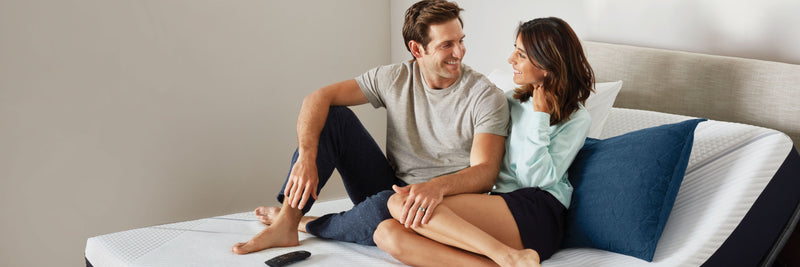10 Tips for Falling Asleep Fast
December 16, 2019
Author: sertaadmin
Lying in bed at night, tired but unable to sleep, can quickly send you into a spiral of frustration that leads to sleeplessness that leads to more frustration and so on. Eventually you end up utterly exhausted.
Maybe you have trouble winding down at the end of busy day or tuning out the brain-stimulating environment of TV screens and online news. Maybe you can’t stop thinking about a big project at work. Insomnia is not only exasperating; it’s harmful to your health and wellbeing. And while there are myriad causes of sleeplessness—whether long term or short term—there are also a variety of useful techniques to help you get to sleep more quickly.
1. Keep a journal.
Our lives are full, and with so many modes of instant communication, we are perpetually multi-tasking. While our brains seem to keep up automatically, it’s difficult to hit the brakes at night. One way to stop mentally rolling over your to-do list is to make a physical list of reminders, thoughts and tasks that need be completed. Keep the list by your bed, so if you think of something to add, you can write it down and let it go for the night.
2. Practice meditation.
Meditation’s positive effect on sleep has been studied, and some apps provide meditation programs for better sleep, among other things. The practice of meditation includes bringing the mind to a singular focus. Breathe deeply and concentrate on the sound and sensation of your breath. You can even count the breaths you take.
3. Adhere to a schedule.
We generally see better results in children’s sleep habits when they stick to a schedule. It looks like that counsel extends to adults as well. To keep your circadian rhythms (your natural body clock) steady, go to bed and wake up at about the same time every day. You’ll feel more alert in the morning and more awake throughout the day.
4. Eat earlier.
Going to bed on a full stomach can cause physical discomfort, indigestion and heartburn, which will keep you awake at night. Adjust your mealtime so you have a few hours to digest before you go to sleep. At the same time, make sure to eat enough—or munch on a light snack later—so you don’t experience hunger pains when you get to bed.
5. Drop the temperature.
A decrease in your core body temperature helps prepare you for sleep. Turn up the A/C or turn down the heat as you get ready for bed. If that’s not enough, remove a blanket from your bed and make sure that your mattress does its part to promote a comfortable sleep temperature.
Is your bedroom too hot or cold? Find the ideal sleep temperature for your best night’s sleep.
6. Ditch the screens.
Careful studies have shown that even our small electronic devices emit enough light to send signals to the brain that promote wakefulness. Adults are influenced by screen light and children are particularly susceptible. Put your phone, tablet and/or computer across the room (or in a separate room) to remove the temptation to get one last look at email. Try reading a book before bed if you feel wide-awake and restless.
7. Nix the afternoon coffee break.
Coffee is a stimulant—one that clearly works given how ubiquitous it is in our daily lives. But at night, the effects of caffeine in the blood stream pose a big barrier to sleep. Try not to drink any caffeine after 2 o’clock in the afternoon to give your body time to burn it off.
8. Get comfortable.
Start a bedtime ritual or routine where you perform activities that prepare you for bed and make you comfortable. Use the restroom, brush your teeth, wash your face and bring a glass of water to your nightstand. Start mentally winding down as you physically get ready for bed.
9. Go dark.
Light has a significant impact on your natural wake and sleep cycles, so try to get your bedroom as dark as possible. That might mean using a different clock or adding blackout curtains to your windows. If that doesn’t do the trick, or if you need to keep a hall light on for kids, use a sleep mask to block out the light.
10. Fall in (love with) your bed.
First of all, make sure you have the right mattress! Use our online mattress selector to find one that fits your unique comfort preference. Second, make your bed inviting.
If that means a big, fluffy down comforter or a bright, eye-catching blanket, create a space that you enjoy and feel good in.


